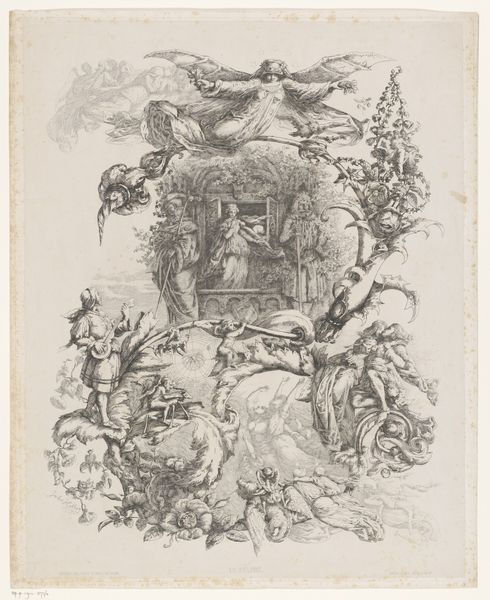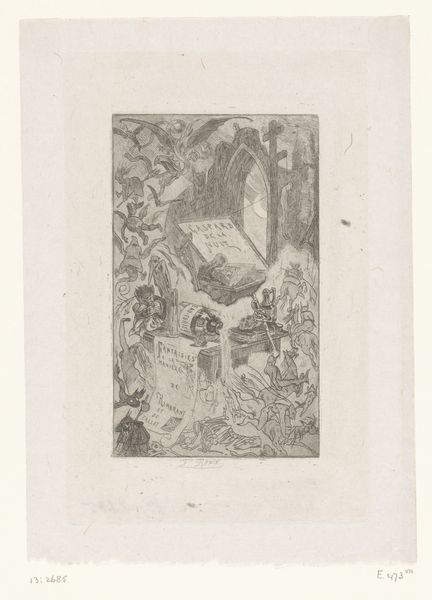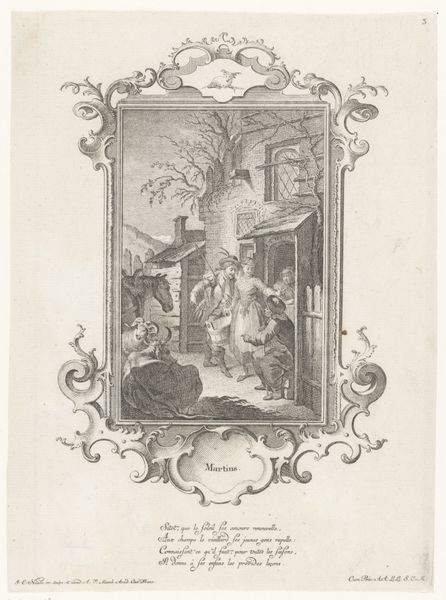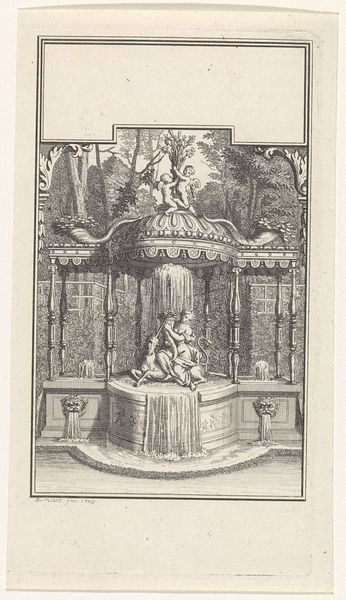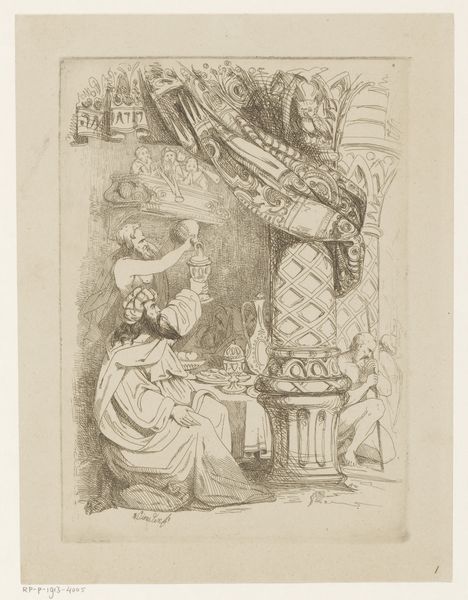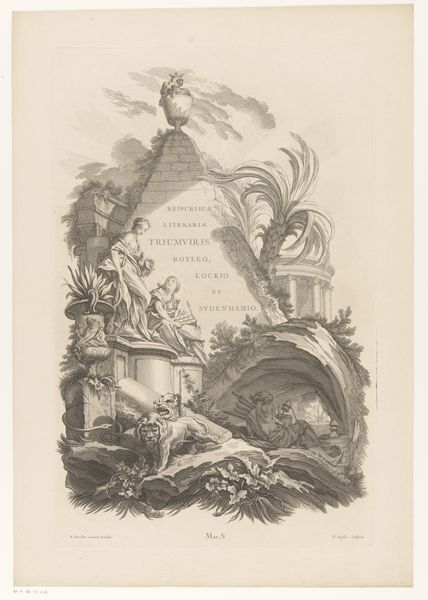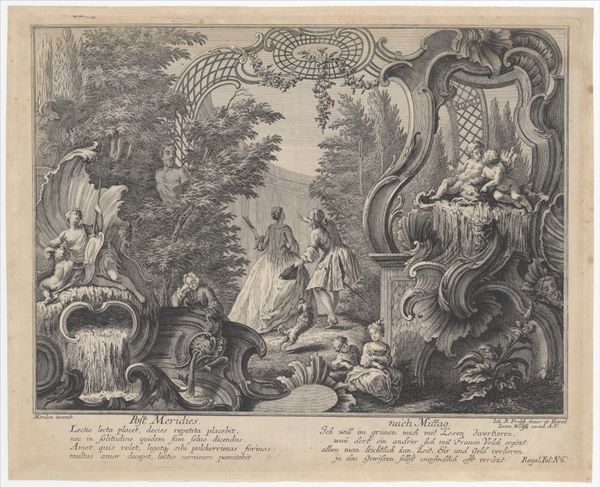
Bewapend figuur wijst naar een monument in een landschap met Romeinse ruïnes 1673
0:00
0:00
drawing, print, ink, engraving
#
drawing
#
baroque
#
pen drawing
# print
#
pen illustration
#
pen sketch
#
old engraving style
#
landscape
#
figuration
#
form
#
ink
#
line
#
cityscape
#
history-painting
#
italian-renaissance
#
engraving
Dimensions: height 120 mm, width 101 mm
Copyright: Rijks Museum: Open Domain
Editor: This is “Bewapend figuur wijst naar een monument in een landschap met Romeinse ruïnes” by Johann Oswald Harms, made in 1673. It appears to be an ink engraving. There’s something almost theatrical about the way the figure points amidst all these ruins. How do you interpret this work? Curator: The means of production are crucial here. Think about the engraver's painstaking labor, using simple tools to transform metal into a printing plate capable of reproducing this image for a wide audience. Notice how the dense network of lines, etched with considerable effort, depicts both grand architecture and natural decay. How does that materiality influence your perception? Editor: It's fascinating to consider the repetitive, almost meditative, work involved. It really makes me appreciate the distribution of this single image and how each print spreads an idea. The decay, and the figure, feels connected to this. Curator: Exactly. Harms presents not only the aesthetic value of ruins but considers their practical use as raw materials, remnants of previous production cycles re-integrated into later ones, even turned into capital via artmaking. Are we really looking at melancholic contemplation or disguised commentary on resource exploitation and cycles of making and unmaking? Editor: So, this isn't just romanticizing ruins, it's looking at what they were made of and what they become, connecting artistic labor, social context, and the lifecycle of materials? That's incredible! Curator: Precisely. Consider also the audience for whom these images were created, how such printed works fueled early forms of tourism, and brought landscapes into private collections for study and admiration. Editor: I see, the consumption and transformation of both resources and visual information become intertwined in this single print. Thanks! Curator: The layers of artistic choices and socio-economic reflections invite an understanding that art embodies so much more than mere aesthetic or historic qualities!
Comments
No comments
Be the first to comment and join the conversation on the ultimate creative platform.

